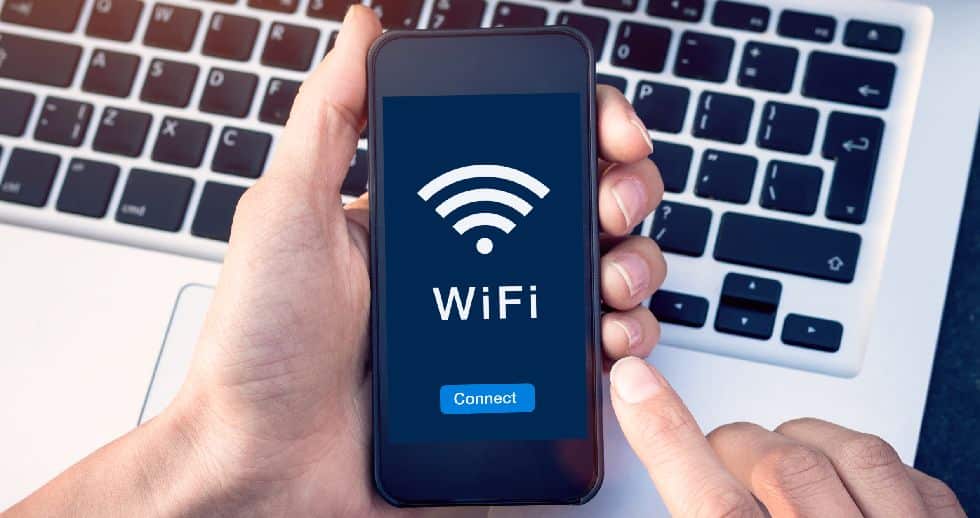Here’s the translation:
CableLabs warns that the use of the 6 GHz spectrum is exploding and is rapidly approaching its limit, especially in residential environments with a high density of devices.
The 6 GHz spectrum, one of the cornerstones of modern Wi-Fi alongside the traditional 2.4 and 5 GHz bands, is experiencing unprecedented adoption. According to recent data from CableLabs, its exhaustion could occur in the coming years if more unlicensed spectrum is not allocated.
At a time when U.S. regulatory bodies and those in other countries are debating the future of radio spectrum management, CableLabs—a leading organization in broadband innovation—has released the first results of a technical analysis of Wi-Fi usage in real-world environments, revealing a critical conclusion: the 6 GHz band is at risk of collapsing if the availability of free spectrum is not expanded.
A realistic model in a 12-story building shows imminent risks
To assess the impact of the growing demand for wireless connectivity, CableLabs conducted a simulation using the NS-3 engine, modeling a 12-story residential building with 144 units. The analysis included 6 GHz Wi-Fi access points and connected devices such as smartphones, laptops, tablets, and televisions in each unit.
📈 Growth Scenario:
- Current home connectivity levels were used as a baseline and projected over five years with expected growth in devices and data traffic.
- 6 GHz channels were randomly assigned to each unit, avoiding direct overlap and simulating optimal usage as much as possible.
- Two key parameters were measured: one-way latency (>10 ms) and packet loss (>2%), essential indicators for assessing Wi-Fi service quality.
Concerning results: 1 in 3 homes would experience Wi-Fi degradation
According to the collected data, 30% of the analyzed homes would show latency exceeding 10 ms and packet loss equal to or greater than 2% on at least one device after five years of growth.
These thresholds, considered as acceptability limits for real-time applications such as video calls, online gaming, or home security systems, imply significant deterioration in user experience quality.
If latency and packet loss continue to rise, even less sensitive services like video streaming could begin to fail.
Consequences for users, businesses, and manufacturers
If the current scenario remains unchanged without new segments of free spectrum, the effects will translate into:
- Notable degradation of Wi-Fi connectivity in dense urban areas.
- Negative impacts on critical applications for remote work, education, health, and entertainment.
- Obstacles for U.S. manufacturers of Wi-Fi devices that rely on robust international standards.
- Loss of technological competitiveness compared to regions that do expand their unlicensed spectrum.
The solution? More free spectrum and proactive public policies
CableLabs warns that any attempt to reduce or redistribute the 6 GHz spectrum in favor of licensed uses would severely compromise the Wi-Fi ecosystem, which currently supports a crucial part of connectivity in homes, businesses, and public spaces.
In its previous publications—such as “The Case for Additional Unlicensed Spectrum” (2024) and “The Near Future Requires Additional Unlicensed Spectrum” (2025)—the organization had already alerted about this imminent challenge. This new simulation confirms it practically and with technical evidence.
An urgent call to spectrum policy makers
CableLabs has confirmed it will publish a comprehensive technical document with the methodological details of the study, including data, graphs, and models used. The organization hopes this work will serve as a framework for telecommunications regulators, both in the U.S. and other regions, to ensure that Wi-Fi—an essential technology for internet access for millions—remains stable, accessible, and scalable.
📊 In summary:
- The 6 GHz band is rapidly saturating, especially in dense residential buildings.
- More free spectrum is needed to avoid bottlenecks in Wi-Fi.
- Misguided policies that restrict this band would represent a blow to the performance and competitiveness of the wireless ecosystem.
- The future of home connectivity depends on strategic spectrum management that prioritizes the real needs of users and businesses.
via: CableLabs

